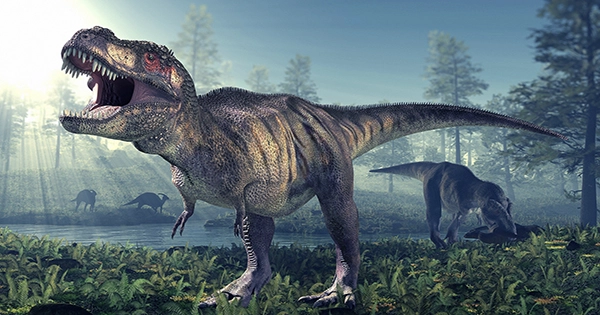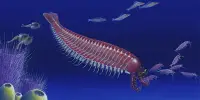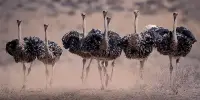Taking a dinosaur’s temperature would have been deadly – and difficult – in the Cretaceous, but some scientists believe they have done so, calculating the body heat of several notable species. Their findings may change how we think about ancient animal habits, potentially rendering portions of Prehistoric Planet obsolete before it is completely launched. One of paleontology’s oldest controversies, whether dinosaurs were warm-blooded or cold-blooded, has a new answer: it depends. The enormous variation among dinosaurs, according to this theory, was mirrored in how they warmed their bodies. Modern mammals and birds, for example, spend a lot of energy to maintain a consistent body temperature, but others rely on external heat to get going in the morning.
Dinosaurs were originally thought to as (typically) bigger counterparts of contemporary reptiles, and so were dependent on ambient heat. Subsequent data, notably the finding that birds are truly dinosaurs, has brought this into doubt, and the issue has gone back and forth. A third theory claims that the bigger dinosaurs had so much thermal mass that they were able to maintain a constant temperature without needing to warm up. On this topic, a research released today in Nature challenges the premise that all dinosaurs should be put together and shows extensive variety. That is not difficult to believe.
The finding that certain dinosaurs survived below the Antarctic Circle, where they experienced months of near darkness, demonstrated that some dinosaurs must have been able to provide their own body heat. However, the distribution of some of the more well-known species is more surprising. Warm-blooded organisms need oxygen to burn fats and carbohydrates to raise their body temperature, necessitating a substantially higher oxygen intake. That’s why, rather of obtaining oxygen through their gills, marine creatures must rise to the surface to breathe (whatever the makers of some scam products will tell you).
Caltech’s Dr. Jasmina Wiemann and co-authors recognized that if scientists could figure out how much oxygen dinosaurs used, they’d have a good idea of how they stayed warm. They believe this approach is more dependable than prior methods, which included looking at growth rates or isotope ratios in their bones. In the same way as burning coal or wood creates garbage, oxygen use in the body produces waste, some of which becomes fossilized as dark organic matter. The scientists used surviving species as comparisons to examine the leg bones of a wide range of animals in order to determine waste abundance.
The majority of the dinosaurs included in the research exhibited symptoms of high oxygen consumption, although there were few exceptions. Saurischians, or “lizard-hipped” dinosaurs — renowned examples include Triceratops and Stegosaurus – had oxygen consumption similar to current reptiles at the lower end of the spectrum. Dinosaurs like T. rex and Velociraptors, on the other hand, were significantly greater oxygen users. This may give the impression that the divide is based on diet, which is understandable. According to the team’s findings, sauropods, including the greatest herbivorous giants, were likewise warm-blooded, notably Diplodicus. Sauropods, like theropods, were ‘bird-hipped,’ and it appears that all members of this group supplied their own heat.
Many non-dinosaurs from the same time period were also warm-blooded, according to the study, including pterosaurs, which evolved high metabolisms long before they took to the sky. “This is incredibly exciting for us as paleontologists because one of the oldest problems in paleontology is whether dinosaurs were warm-blooded or cold-blooded, and now we think we have a consensus that most dinosaurs were warm-blooded,” Wiemann said in a statement.
The research also calls into question a theory regarding why certain animals survived the post-asteroid cold while others did not. Weimann explained, “Having a high metabolic rate has typically been regarded as one of the primary benefits when it comes to surviving large extinctions and effectively propagating thereafter.” This couldn’t be true if so many of the extinct dinosaur families were also warm-blooded. “We are in the sixth major extinction,” Weimann continued, emphasizing the importance of understanding prior extinctions.















